


The concept of grocery delivery service is at least several centuries old. Back in the day, however, it was a luxury enjoyed exclusively by the privileged. Not anymore: the advent of the Internet and mobile technology made it available to anyone who owns a smartphone. If you’d like to enter this booming market, you’ve come to the right place — scroll down to learn all the important things about grocery delivery app development.
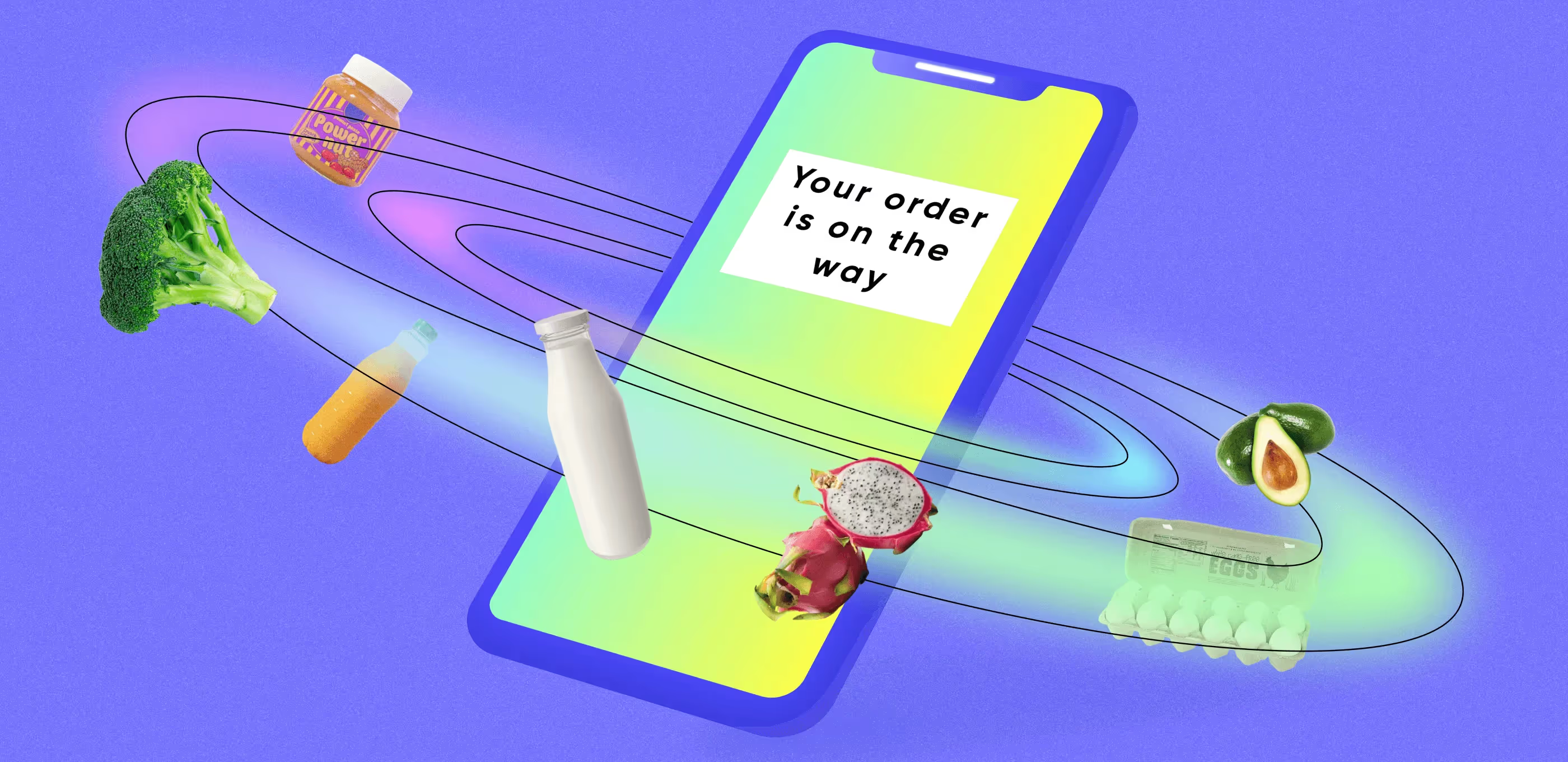
Put simply, it’s an app that allows you to buy groceries from the comfort of your home — much like an online marketplace, but with food and shorter delivery times. You browse through a virtual catalog of all goods available at one or several stores, add the ones you need to the cart, pay directly in the app, and wait for the courier to bring the order directly to you. Apart from this basic functionality, today’s grocery delivery apps often feature GPS-based order tracking and various personalization elements that use AI and machine learning.
Grocery delivery apps are usually based on these two models:
As of 2026, there are three key trends on the online grocery delivery market: exponential growth, heavy competition, and a focus on instant delivery. Let’s discuss them in detail.
The global online grocery market is expanding rapidly: having grossed $286 bln in 2021, it’s expected to reach a staggering $2,159 bln by 2030. The primary driver of the demand for grocery delivery apps is the opportunity to save time and avoid physical shopping in-store. Another factor is the growing preference for e-commerce, largely spurred by the pandemic and the increasing availability of mobile devices. More people than ever are now opting to buy necessities online, and this is going to become even more commonplace in the coming decades. The key takeaway: 2026 is a perfect year to develop a grocery delivery app.
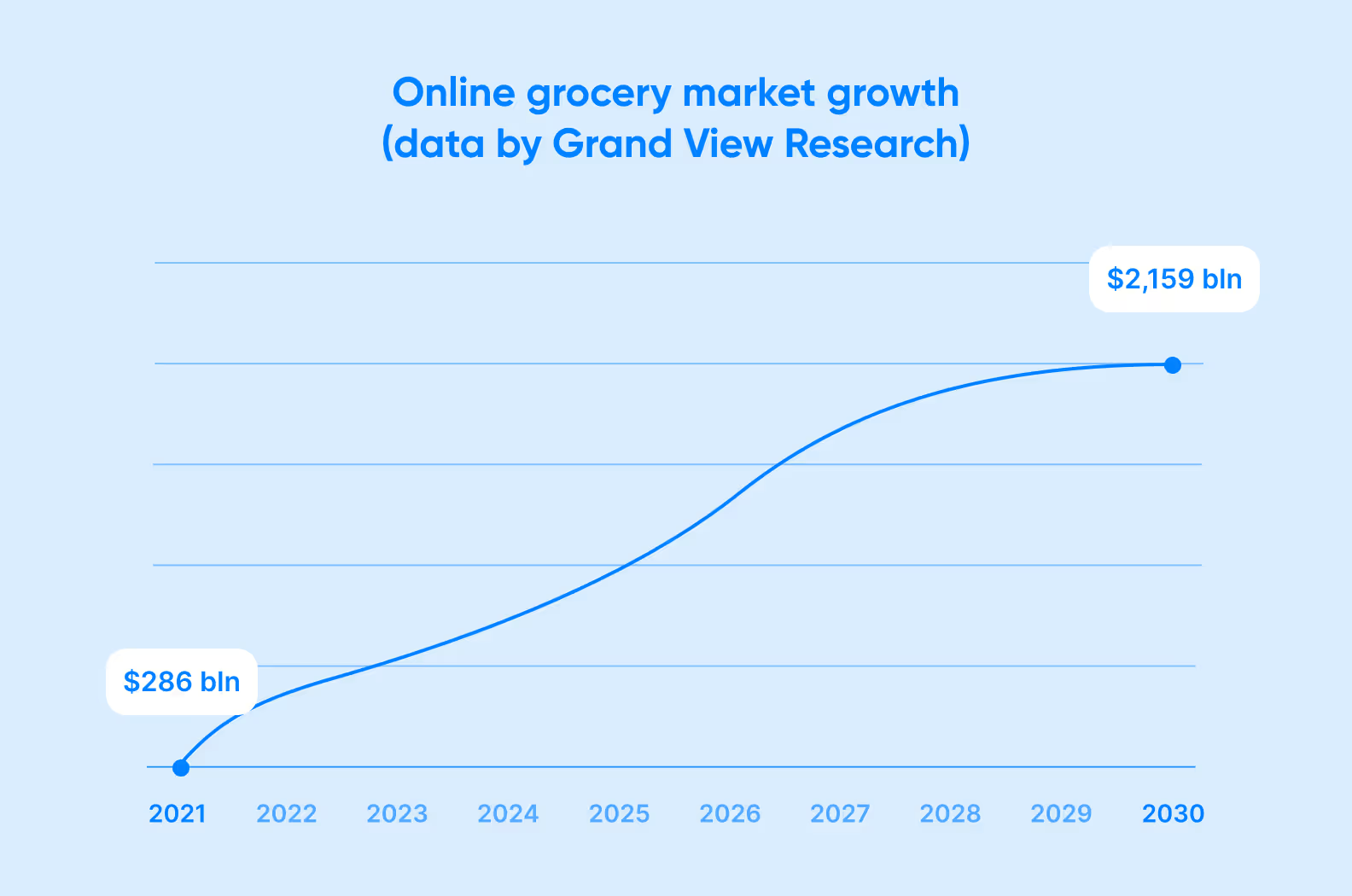
In the US, the key players are Walmart, Kroger, Amazon Fresh, Instacart, and Uber Eats, while some of the upcoming brands are Imperfect Food, Thrive Market, and Dumpling. Given how attractive the market is, the competition is becoming fiercer by the year. Both well-established companies and newcomers are facing the growing rivalry of players delivering meal kits and ready meals, and HoReCa* apps like DoorDash and Uber Eats are also entering the grocery delivery field. All of this means that the opportunity for new brands to take hold of the market is shrinking every year.
In terms of the actual business practices, more companies are choosing to focus on same-day or instant delivery instead of self-pick-up (click & collect). Major players all over the world boast rapidly diminishing delivery times, with the average order clocking at an hour or less. This is coupled with the introduction of shopping subscriptions, which offer customers free delivery for a fixed price per year — some examples of this practice would be Kroger’s $79 annual subscription program called Delivery Savings Pass or Walmart’s similar $98 membership program simply called Walmart+.
*Hotel, Restaurant, and Catering
Before developing your own app, it’s essential to get familiar with competitors. Here are some examples of the most popular grocery delivery apps.
Instacart is simply massive. This aggregator-type app is partnered with over 40,000 stores all across the United States, boasting some 500 million products available to shop across the catalog. Once the customer has placed their order, the app connects them with an in-house personal shopper who will then shop for them and deliver all the items on the same day. Users can use an advanced filtering system to quickly find what they need, directly communicate with shoppers, and track their orders’ progress in-app.
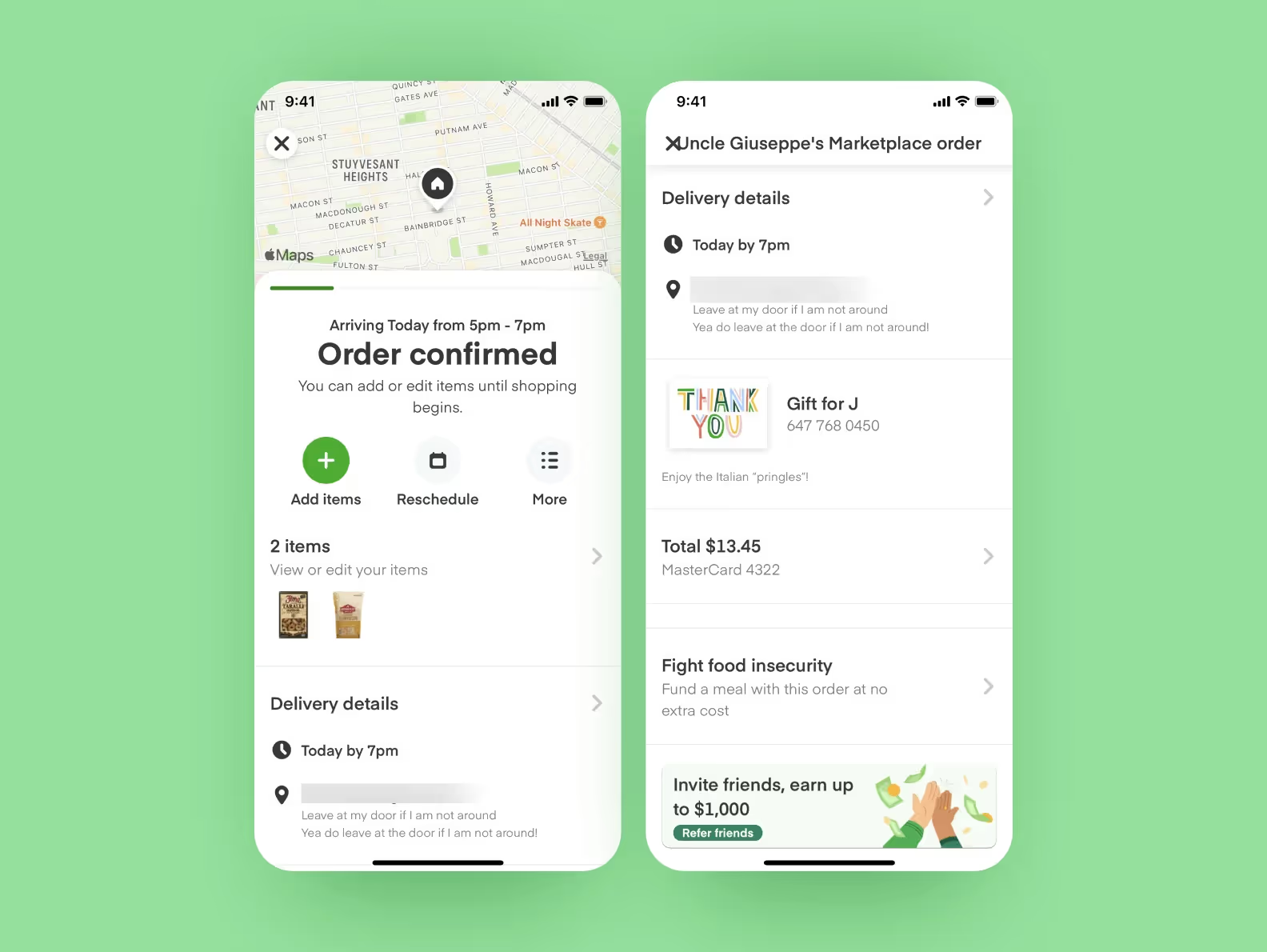
Shipt is another major contender in the US online grocery market. In many ways, it’s similar to Instacart: the app is based on the aggregator model, partnering with various stores and connecting customers with personal shoppers from a nationwide fleet of more than 300,000 independent contractors acting on behalf of the company. In addition to this, you can set personal dietary preferences that will make it easier to navigate the catalog, as well as select favorite shoppers, add special requests and preselect substitutions.

Some time ago, Uber Eats was a HoReCa app that focused exclusively on delivering meals from restaurants. Well, not anymore. The current version of the app allows you to buy all your groceries online with no-contact and store pick-up options, real-time order tracking, and unlimited $0 delivery with a subscription — all with a sleek, minimalist design that is both pretty and functional.

Walmart is a titan of the industry, and its app is packed with features that only confirm this status. Users can order food, clothes, household appliances, and even furniture from a seemingly infinite catalog that is conveniently separated into multiple subsections. To make the shopping process even more convenient, you can create an easily editable favorites list, quickly add your most-purchased items to the cart, preselect substitutions, and get personalized item suggestions. Once the order is placed, customers can track it in real time directly from their home screen.
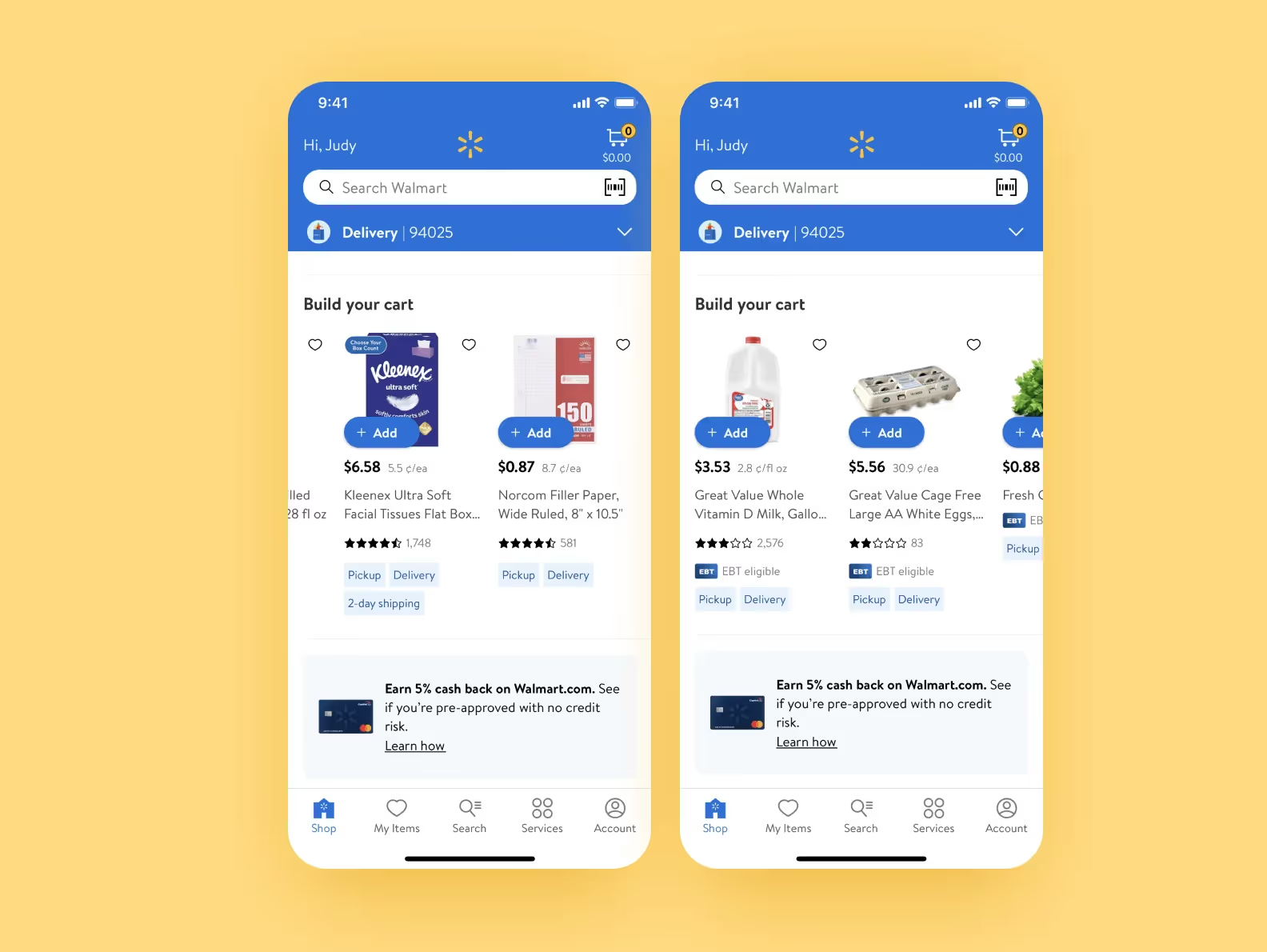
When your customers first open the app, they should be greeted with:
A quick and intuitive registration process that can be completed in a minute or two. One way of making it as quick as possible is allowing users to authenticate with their social media accounts. If you want to greet new users with an onboarding, make sure it’s skippable — there isn’t always time for tutorials.
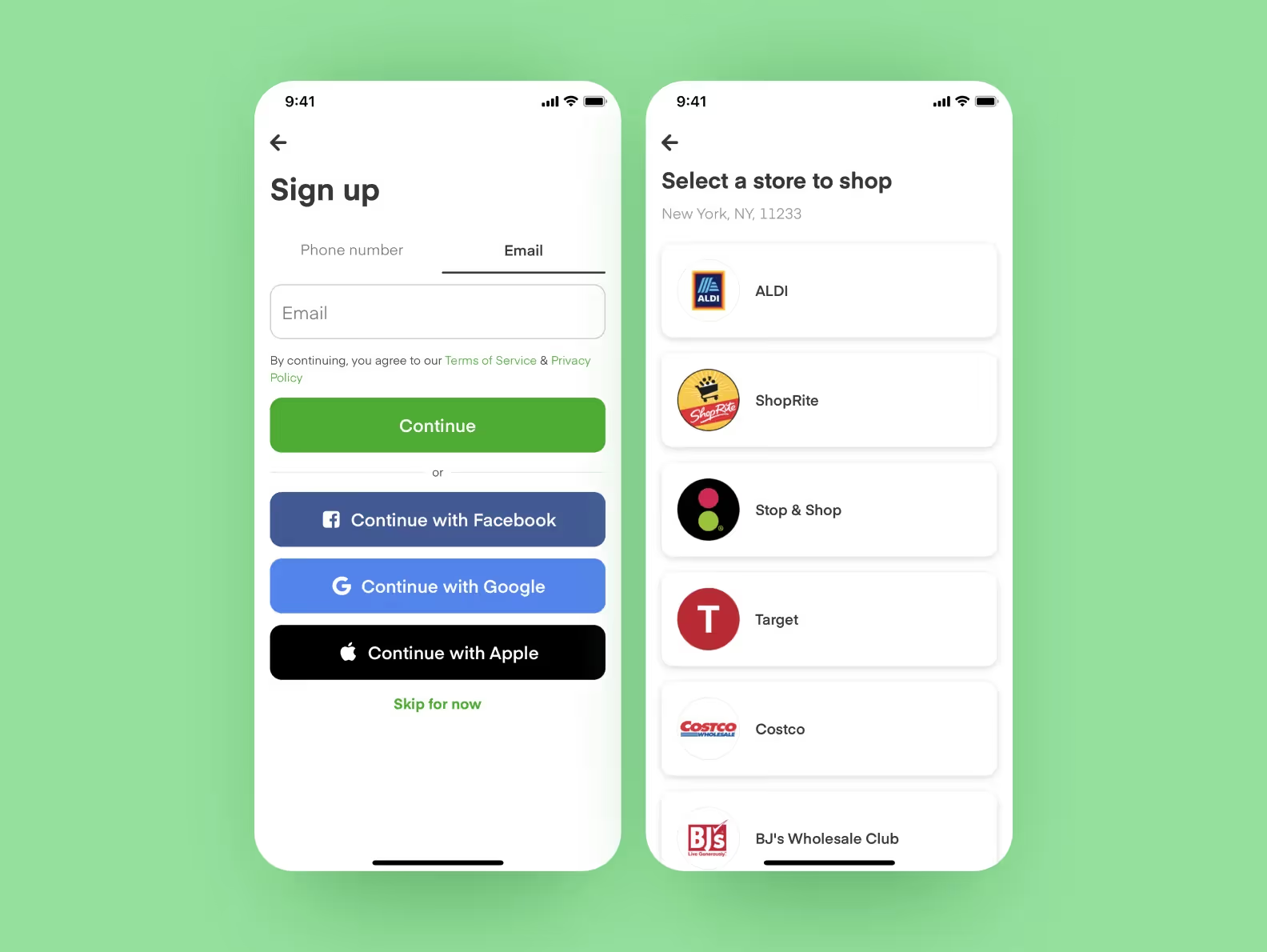
After that, they find themselves in the main part of the app — the online shelves. Let’s look at what we have here:
A catalog that is divided into various categories and offers clear product presentation. A coherent structure prevents users from getting frustrated by trying to find the goods they need, while informative product cards help them make balanced decisions.
Product search with multiple filters. Even a perfectly organized catalog won’t satisfy everyone: some people prefer to jump straight to what they need by using the search bar.
Product ratings & reviews. Since your customers can’t touch, smell, or otherwise examine the product by themselves, they will always be more wary of online shopping than in-store shopping. A simple way of building trust is introducing a system of user feedback: once the user buys a certain product, let them describe and rate their experience.
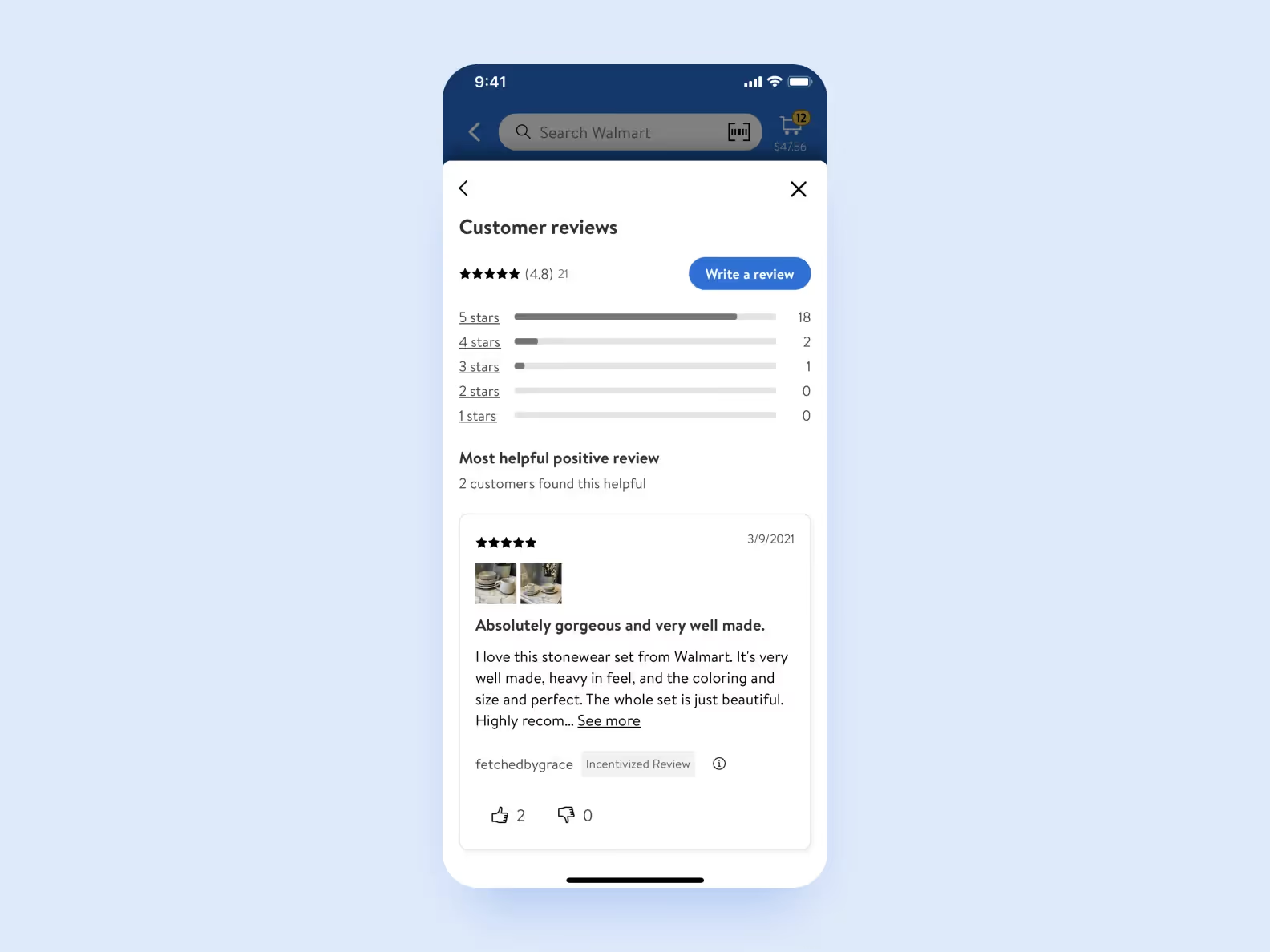
A shopping cart. Nothing groundbreaking here: just make sure that it comes with a straightforward way of managing items, like changing their quantity or deleting them altogether.
OK, the cart is full of goods, and it’s time to proceed to the checkout. Several important features to implement here:
A simple checkout process that is synched with the user profile. It’s actually one of the most crucial things on this list: a bloated and complicated checkout always means low conversion. Once customers decide to give you their money, it should be as easy to do as possible. You can enhance this step by adding multiple payment options.
Delivery scheduling. Instant delivery is cool, but it’s not always the most convenient option. Allowing users to schedule their orders adds a bit of variety and gives the app a more custom-tailored feel.
Order status & tracking. Once the checkout is complete, the customer’s money vanishes into thin air with no instant justification for this expenditure. To alleviate their anxiety and doubt, provide them with exhaustive information about the order status and whereabouts. Users appreciate it when an application sends push notifications as well.
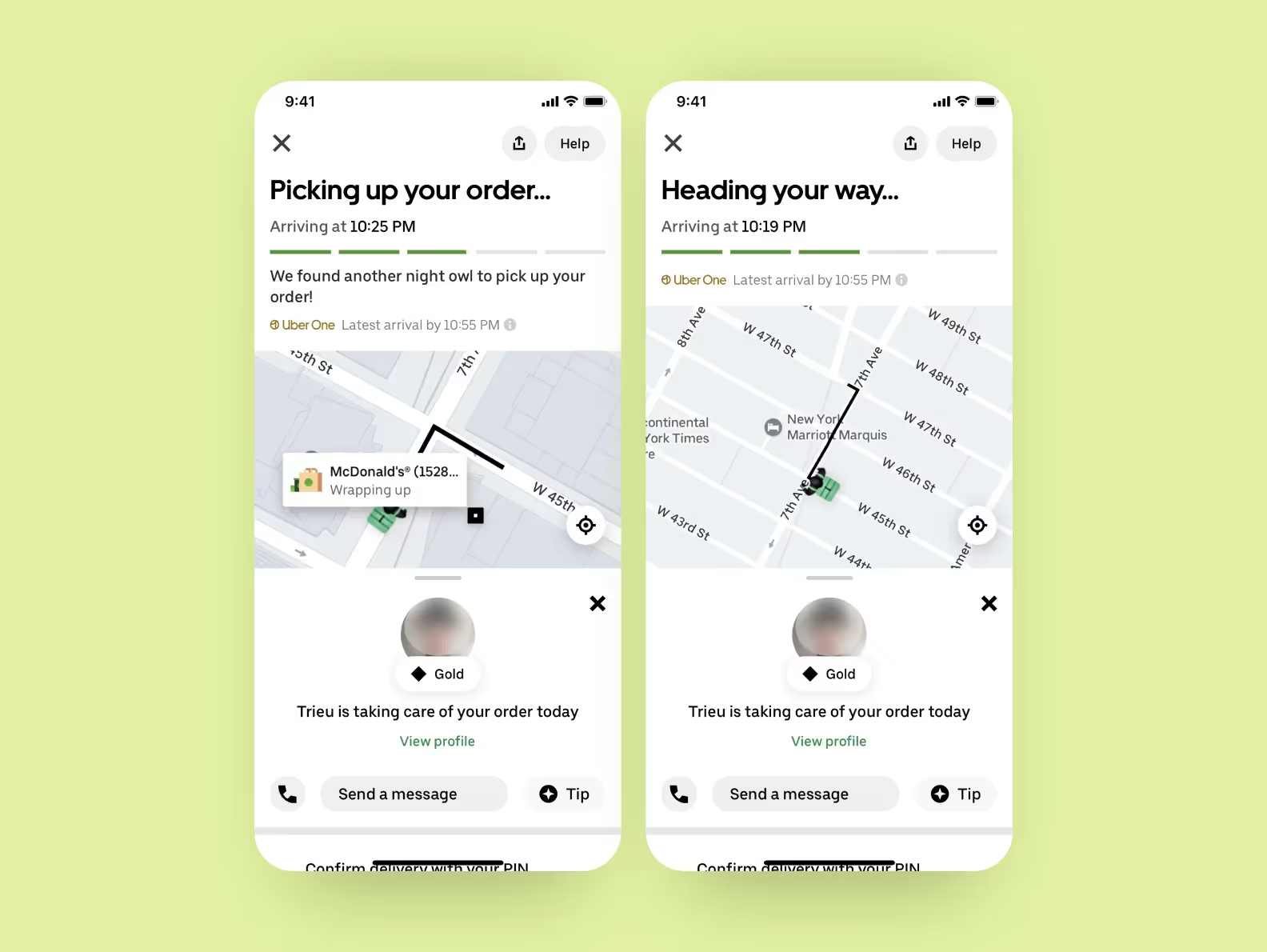
Finally, make sure to add the user profile screen that contains the user’s payment details, address, contact information, and any other data necessary to use the app.
Challenge #1: Structuring a catalog that contains hundreds or even thousands of products and making it easy to navigate for customers.
Solution: Use categories, filters, smart search, and recommendations.
Challenge #2: Convincing customers to buy products they can’t touch or smell.
Solution: Allow users to rate products and leave reviews, provide information about ingredients and nutritional value for each position in the catalog, supplement every product card with extensive photo coverage.
Challenge #3: Retaining customers.
Solution: Use an AI-supported recommendations system, offer exclusive discounts, make it easy to repeat past orders, add personal tags, and implement any other personalization features you may deem necessary.
Challenge #4: Keeping the customer sufficiently informed about the status of their order.
Solution: Integrate a GPS-tracking service like Google Maps into the app.
Challenge #5: Dealing with massive amounts of data that your app will invariably generate.
Solution: Make sure the development team consists of competent specialists that can create a solid infrastructure for storing, distributing, sharing, and accessing big chunks of data.
Challenge #6: Providing sufficient functionality for three user roles (customers, admins, and shoppers/couriers) at once.
Solution: Create two separate apps — one for customers, another for shoppers or couriers. As well as an admin panel for managing both types of users.
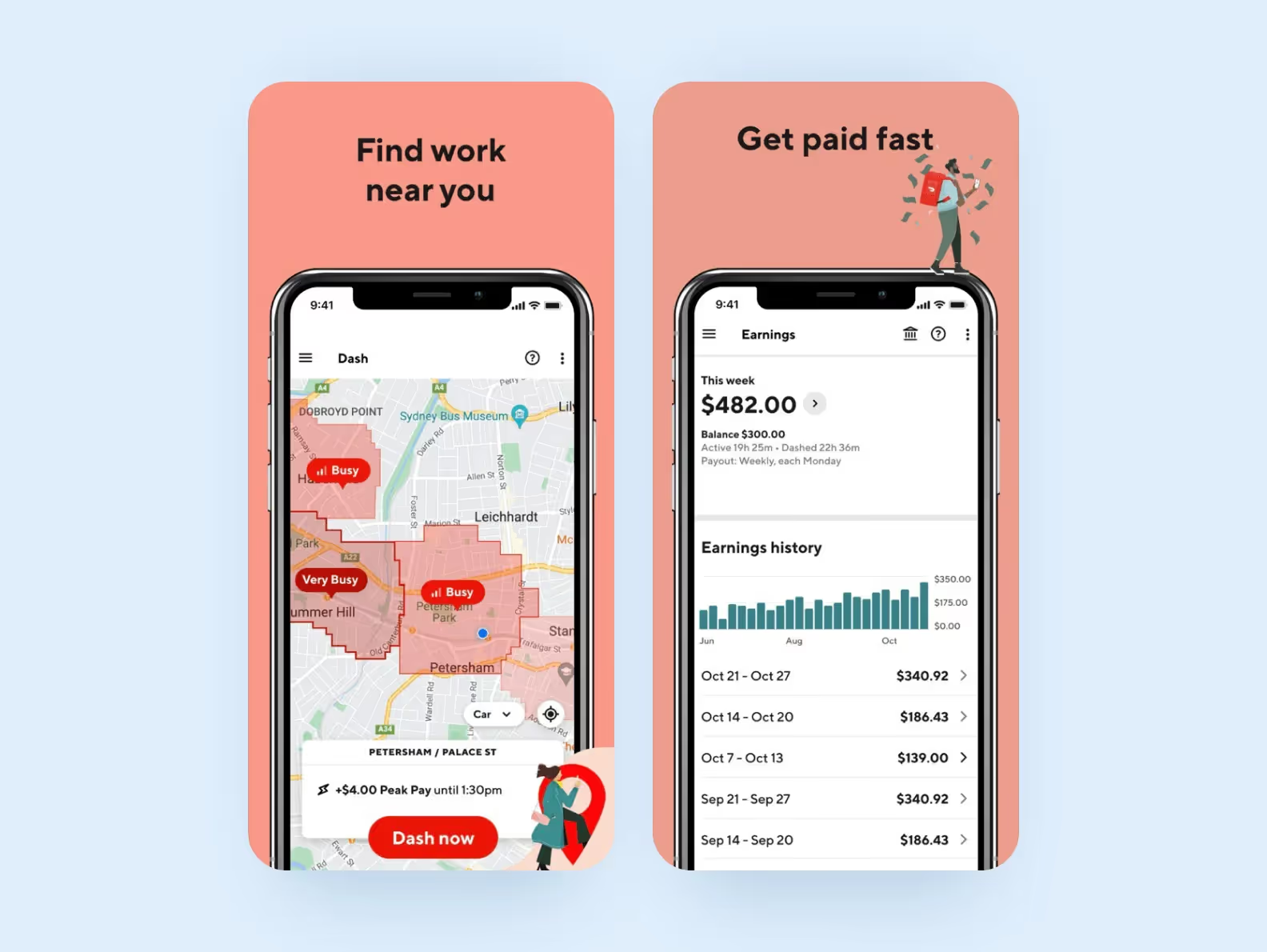
When you decide to do something from scratch, first is thinking the process over and then actually doing the thing. Practically the same way it works when building customer apps. First, you need to tackle business matters, then—do the tech part.
The first stage mainly focuses on the theoretical part of the process: ideating, researching, discovering. Though don’t let it confuse you: conceptualization is no less important than coding. Let’s see what you need to do at this point.
Market analysis. Before launching a grocery shopping app, you want to learn everything about the current state of the field. Get to know your competitors and study the rival products carefully in order to define their strengths and weaknesses. Understand what drives the demand and find out in what direction the whole sphere is moving at the moment.
Competitors’ research. The idea is simple: you study rival grocery store apps. Though be sure to go deep, as you need to single out UI/UX approaches, hacks and product characteristics. Deep competitors’ check helps find crucial answers on how to create an on-demand grocery delivery app. This is what you need to uncover:
Customer insights. UI/UX design and even marketing strategies vary depending on the audience. To give your online grocery delivery app the best chances, specify its target users. Define age, gender, location, occupation, interests, use cases and scenarios of interaction.
Feature mapping. Based on the results of your analysis and your business model, choose what features you want to implement for each of the user roles (customer, admin, and courier). We’ve already mentioned the standard set of features for customers, but you can always innovate and come up with new approaches.
Concept formulation. All these investigations provide solid grounds for picturing your future product. Strong concept would comprise:
Once you’ve shaped the idea, grocery app development moves to the next stage. You share all the insights gained earlier with the design team. This is what UI/UX experts will do:
We believe that the best approach to bringing a new concept to life is to first create a minimum viable product (MVP). An MVP is a barebone version of an app designed to showcase its main functionality.
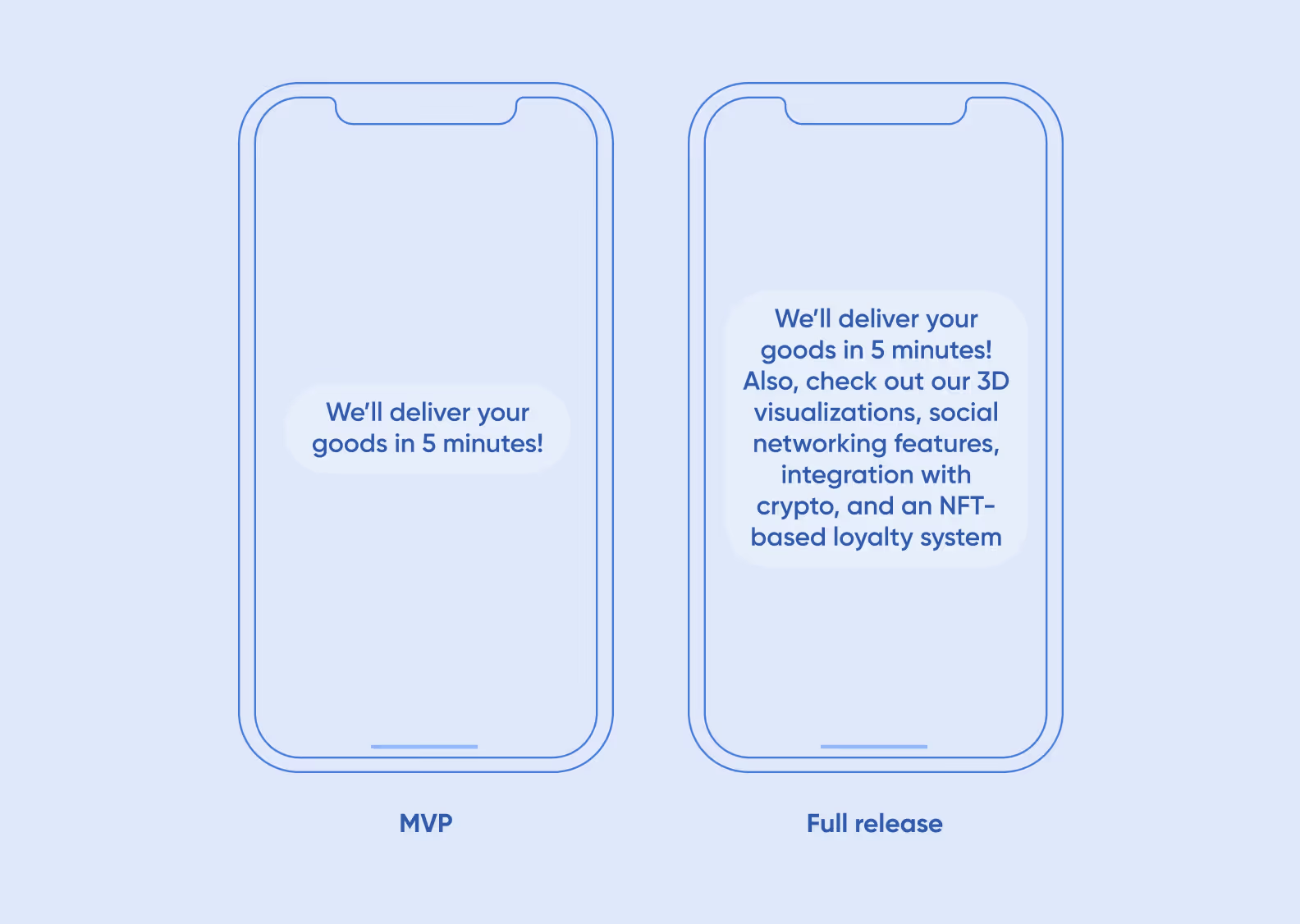
It’s perfect for gauging the market, testing the viability of your idea, and raising some funds — a fully-functioning product is much more convincing than a bunch of promises and pretty pictures. In other words, it’s a perfect fit for any startup, and this is exactly what we start with here at Purrweb. Let’s break down the grocery mobile app development process into several steps.
Choose the stack. Depending on the app type developers select technologies. Two different vendors can advise completely different approaches to coding the same customer app. The difference lies in the company’s background, programmers’ expertise and preference, of course. Ensure that your tech solutions should have a wide community of followers, get regular updates and support scalability. Here’s our personal recommendation for grocery app development:
Write the code and launch the first version. It’s time to write some code. The most important thing here is to make sure that your developers are competent professionals who know what they’re doing — there’s nothing that users hate more than buggy software. As you want to reach as wide an audience as possible, cross-platform development is the better choice — this means simultaneously coding for Android and iOS.
Gather feedback and iterate. Establish proper channels of communication with your audience and listen to what they have to say. Bear in mind that not all feedback is helpful and parts of it may even be counterproductive — instead of trying to implement every single suggestion, focus on noticing the most important trends in the messages you receive. Once you’ve filtered the incoming flow, start implementing the suggestions that come up the most.
Release new updates. Your task at this point is to gradually flesh out your product in cooperation with the target audience. Add other features from the backlog, maybe scale a bit, and simply bring the app to perfection. This might take some time — from several months to a couple of years.
Generally speaking, all apps can be divided into three categories: simple, medium, and complex. The distinction is mainly based on the number and complexity of features you want to implement. The grocery app development cost is dictated by the category it belongs to.
Simple: approx. $30 000-$35 000
Medium: approx. $36 000-$45 000
Complex: approx. $46 000-$55 000
When it comes to grocery app development, the product can hardly be trivial, due to the number of user roles, a variety of features and massive data manipulation. Let’s break down the costs using the examples of the grocery store apps we mentioned above. Tip — you can use them as references for your development team.
The complexity of the product can have a big impact on development costs. To build a grocery delivery app you need a team of developers, who can create the software from scratch, who can design, code, test and release it. This is the most convenient way of hitting the market for entrepreneurs.
The sum you pay vendors depend on:
Much depends on the roll-out strategy. Releasing your app for multiple platforms, like iOS and Android, at once costs less than doing it separately. Entrepreneurs can use this knowledge to save money on marketing, which is crucial for market newcomers.
In 2021, a couple of prominent entrepreneurs asked us to design and build a grocery shopping app that would simplify supply management for restaurants of all sizes. This is how Grecha.pro was born. It’s an app that merges messenger functionality with all the convenience of online stores. You can create chats with your suppliers and order the necessary goods right in those chats, keeping all the communication and deals in one place. The clients came to us only with two requirements: it had to look like Telegram and feature Tiffany Blue as the brand color. We built Grecha.pro from scratch in 2.5 months.
Before that, we worked with a food tech startup that aimed to connect its customers with freelance local chefs. The team had already launched a manual Telegram-based service and gained the attention of several large investors, and it was time to create an app.
Much like with Grecha.pro, the concept of Talentum centered around chats. In 4 months, Purrweb designed all the UI/UX aspects, automated the existing business processes, and released the app, which now operates under the franchise of a high-end supermarket chain.
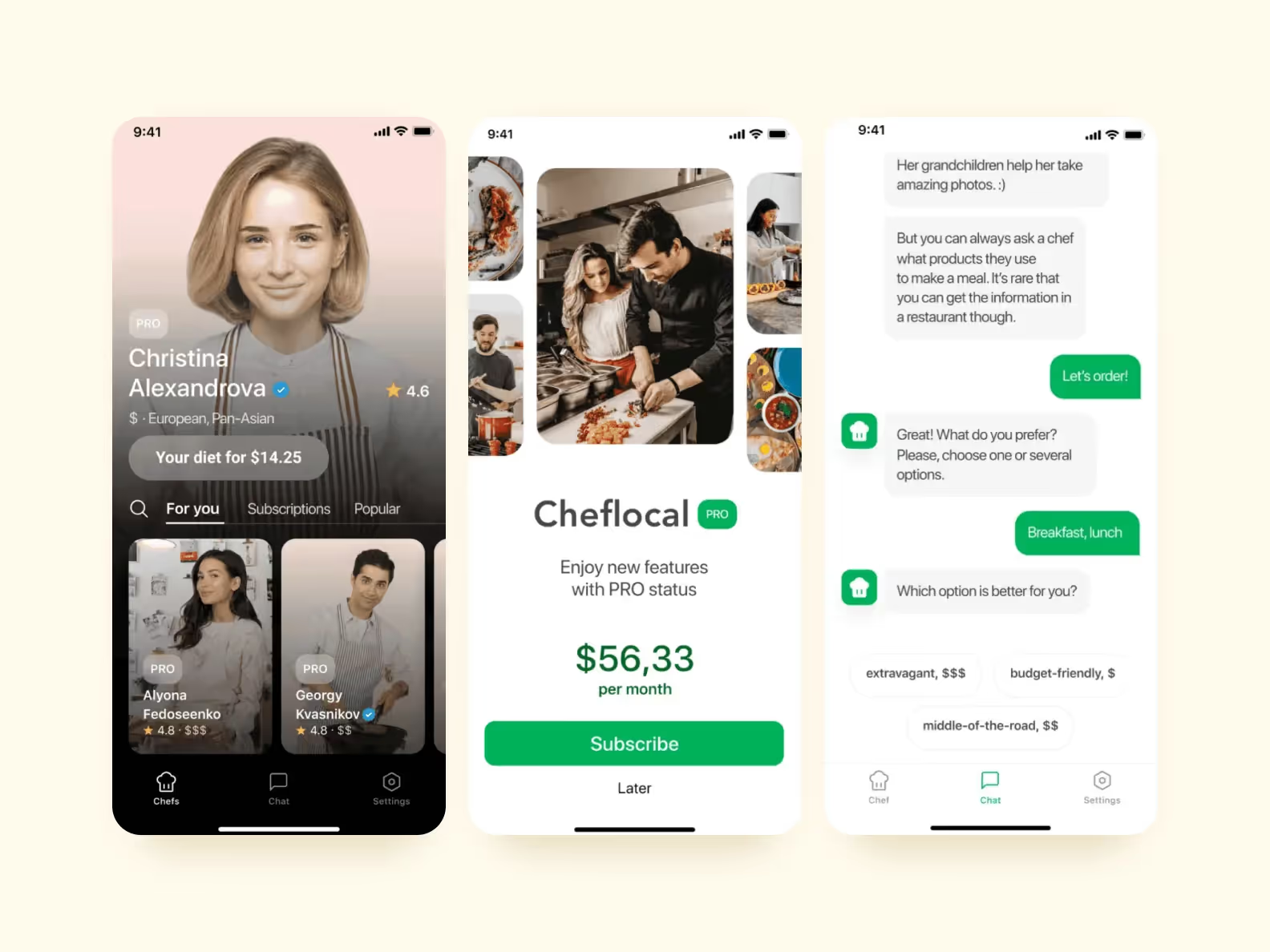
➡️ If you have an idea for a grocery delivery app, we’d love to help you bring it to life. Reach out to us <a class="blog-modal_opener">using the form</a> — we’ll turn your concept into an MVP which is perfect for gauging the market, and then see it through to the full release. And check our article, if you want to learn more about delivery app development.